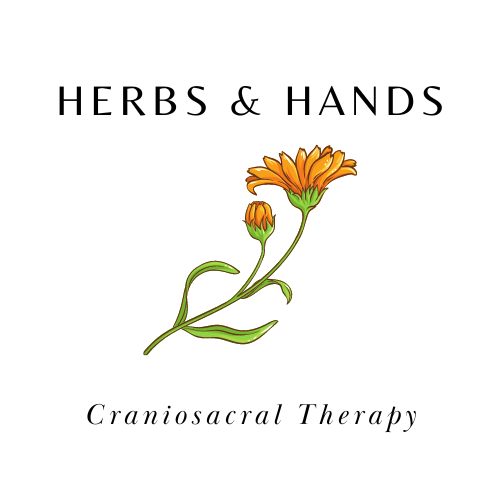What is Craniosacral Therapy?
Craniosacral therapy is a pause and a dance. It is the act of witnessing and being witnessed. It is compassion in touch. It is patience. It is following where one is led without judgment. It is helping the body complete a goal and release. It is restful work.
In less poetic terms, craniosacral therapy is a gentle form of bodywork that works with a subtle movement known as the craniosacral rhythm (CSR). Using this rhythm, the therapist finds areas of the body that aren’t moving fluidly and then helps these tissues find their release. Rather than telling the tissues what to do, craniosacral therapy asks, how can I support you, and listens for the answer from the part of you that knows how to heal.
There are several schools of craniosacral therapy; my training has focused on Upledger craniosacral therapy and Systems Informed Body Mind Therapy. I do not mean to diminish these other methods; I draw inspiration from them but cannot speak about them intelligently as I haven’t studied them intensively.
Like the others, Upledger craniosacral therapy originates from Osteopathy. Like other modern medicines, osteopathic medicine has a complicated history involving moments of insight, brilliance, dedication, scientific curiosity, and the colonization and theft of traditional indigenous healing techniques.
Receiving inspiration and exchanging teachings with others in a respectful and reciprocal relationship is beautiful. However, taking that knowledge, passing it off as your own, and using it to benefit those you identify with while your teachers and their community suffer is another. Unfortunately, this is a recurrent theme throughout history, and the healing arts are not spared from this. For a more in-depth discussion of the origins of Osteopathic medicine and craniosacral therapy, I will direct you to Susan Raffo’s well-written article.
Upledger craniosacral therapy is named after its founder, Dr. John Upledger, an osteopathic physician whose first encounter with the craniosacral rhythm occurred while assisting with a spinal surgery. As the legend goes, Dr. John was tasked with holding the structure that envelopes the spinal cord during a delicate surgery and found he was quite unable to keep it still. He observed a rhythmic movement much slower than the heartbeat and different from the breath. He eventually began calling this rhythm the craniosacral rhythm and made the understanding of how to work with it his life’s pursuit. You can learn more about this story in one of the many books he wrote: Your Inner Physician and You.
Once this Upledger form of craniosacral therapy was developed, Dr. John saw how wide its value could spread and decided to begin teaching his techniques to non-osteopaths. He was criticized for this choice but felt the need for this therapy was too great to limit its application. A diverse group of health care professionals studies Upledger craniosacral therapy. An abbreviated form can also be taught to caregivers.
In this therapy, treatment begins with assessing the craniosacral rhythm’s expression through the body from head to toe. Areas, where this rhythmic impulse in the tissues is diminished, are prioritized, and a series of holds are used to help the tissues release tension. Holds can last for tens of minutes or as few as 30 seconds; as long as there is a response in the tissues and change occurs, the practitioner stays with the hold until the area is better able to express the craniosacral rhythm.
Treatments may occur over the entire body or be concentrated in a specific area, depending on the practitioner's training, the goals of the person seeking support, and what is found on the initial evaluation. Treatments are usually conducted in a series of visits. That being said, I have had people come in for a single treatment and not feel the need for additional treatment for several years. Many of those who seek my aid have benefitted from twice-monthly treatments for an extended period. I receive treatment a minimum of once a month and more often when my body is struggling to keep up with the stresses of life. There are no absolutes in life or craniosacral therapy.
During treatment, people with a greater sensitivity to the sensations in their body tend to feel movements in areas not currently being touched. Others may feel little more than the practitioner’s hands and perhaps some temperature changes. Craniosacral therapy works either way. With time and repeated sessions, most people can feel better the subtle movements and connections within their bodies.
I hope you have enjoyed this introduction to craniosacral therapy, which has answered some questions and raised even more. In my next installment, I will further detail the craniosacral rhythm, what it feels like, the research verifying its existence, and our current theories about what it is and how it sustains our health.
To our health,
Danielle
To find a craniosacral therapist who has received training from the same school as me and who is near you, you can visit Upledger International. There you can search by your zip code or city and also compare therapists based on their level of training.

